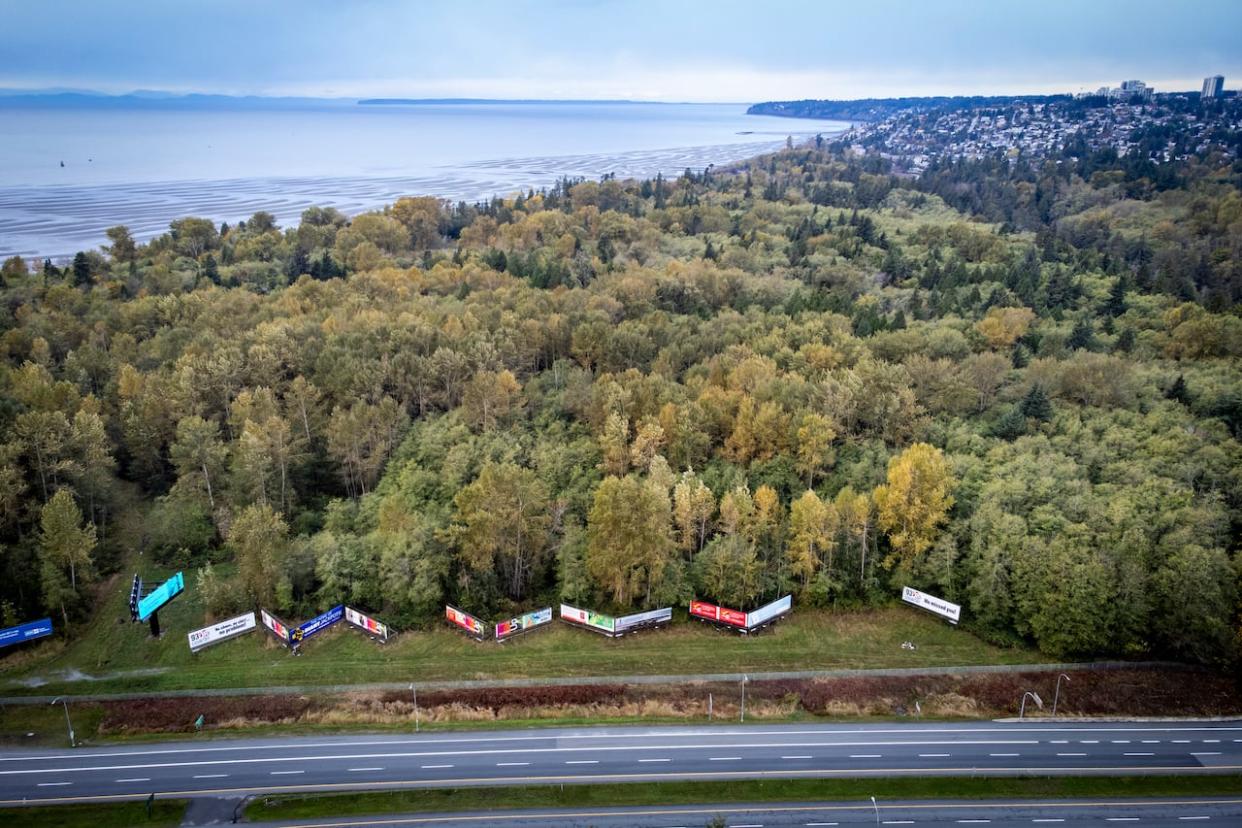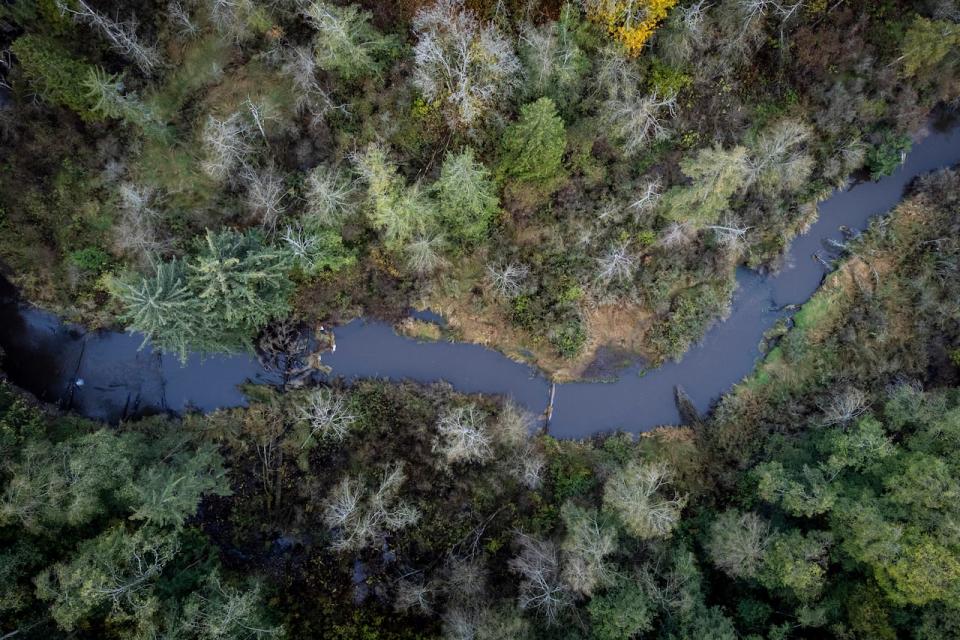Residents oppose proposed biofuel plant on Semiahmoo land, citing concerns about air quality

Residents of White Rock and Surrey are voicing their opposition over a proposed biofuel plant on Semiahmoo land, citing concerns about the long-term impact on air quality and the safety around building the facility near dense residential neighbourhoods and lush wetlands.
The proposed plant would be the result of a collaboration between the Semiahmoo First Nation and Andion Global, an organics-to-renewable energy platform headquartered in Vancouver.
The facility would be built on a parcel of largely untouched land just north of the Peace Arch border crossing, an expanse of green space flanked by Highway 99 and Boundary Bay.
If it receives approval, 70,000 tonnes of organic waste from Vancouver would be trucked to the plant, where it would be converted into renewable natural gas, according to the company.
Elected Semiahmoo Chief Harley Chappell has said the project would provide unprecedented economic opportunity for the nation while diverting organic waste from landfill. Chappell said he would be issuing a statement on Wednesday afternoon.
But those who live nearby say they're concerned about what they call a lack of community consultation, and worry about the long-term impacts of gases from the plant being dispersed over residential neighbourhoods.

A map in an Andrion Global report depicts a model of how nitrogen dioxide could disperse around the plant. (Andion Global/Tetra Tech)
Local business owner Suzanne Smith pulls up a map on her phone, showing the city of White Rock — about 37 kilometres southeast of Vancouver — lit up in green, blue, and yellow. The map was released by Andion Global, and shows the projected spread of gases based on factors like wind direction.
"I can see that my home is right here in this gas pattern. And that's my son's school," she said, pointing at the screen.
"We're talking about things like sulphur dioxide, we're talking about nitrogen oxides. Nitrogen oxides are the smog pattern that you see over a city. White Rock beach could have its tiny little cloud of smog, courtesy of the Andion plant."
Smith said that in a meeting with Andion Global, representatives from the company acknowledged the possibility of unpleasant smells coming from the plant, but that it would have a minimal impact on residents.
"They said, 'This isn't going to affect your lives that much — most of the air quality issues will happen in the winter, and in the winter most people keep their doors and windows closed,'" said Smith.
Company says odours occur at night, in winter
Andion Global did not respond to several CBC News requests for comment.
But in a 159-page document, the company provides detailed information and maps about which gases and odours could spread in the community, depending on factors like wind direction.
"The majority of odour exceedances occur during fall and winter when people are much less likely to be outside golfing, frequenting Peace Arch Provincial Park, queuing at the border or have their residential windows open," reads one portion of the report.
"In particular, less than 20 per cent of the predicted exceedances at Peace Arch Park occur during the spring and summer. Similarly, the majority of predicted exceedances at the identified sensitive receptors also occurs during the nighttime."
Before construction can start, the project needs to go through an environmental assessment and receive an air quality licence. If those approvals go through, construction on the project could begin next summer, and the facility could be operational by 2026.

The Little Campbell River is pictured near the wooded area where a biofuel project is being proposed on Semiahmoo First Nation land near Surrey, B.C., on Oct. 25, 2023. (Ben Nelms/CBC)
Linda Annis, a councillor with the city of Surrey, north of White Rock, says while her city has no jurisdiction over the project, she's heard from hundreds of Surrey residents worried about the plant's impact — including unpleasant smells, noise, traffic and air quality.
"This is a beautiful piece of property, prime water front property very close to residential areas. I think the residents feel frankly this sort of facility belongs in an industrial area," she said.
"I have the utmost respect for the chief and council there, but we all have to be good neighbours and be talking to people."
Smith said she's also concerned about the project's proximity to the Little Campbell River watershed, a habitat for Pacific salmon and trout.
She and a number of other residents are calling for increased consultation and an independent assessment of the impact on air quality.
"None of us that have reviewed the document believe a word of it. We want our own air quality dispersement [assessment] to be completed — we feel that our government owes that to us."


